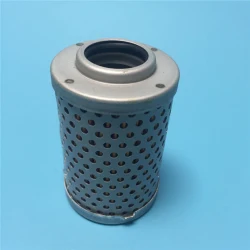Here are some common oil impurities
2024-04-25
Oil impurities can come from various sources and can have different compositions depending on the type of oil and the environment it's used in. Here are some common oil impurities:
1. Particulate Matter: Particulate matter includes solid particles such as dust, dirt, metal shavings, and wear debris from machinery. These particles can enter the oil through contamination from the environment, improper handling, or as a byproduct of machinery operation.
2. Water: Water can enter the oil through condensation, leaks, or emulsification with other fluids. Even small amounts of water can lead to corrosion, lubrication breakdown, and microbial growth, affecting the oil's performance and the equipment's reliability.
3. Dirt and Debris: Dirt and debris can come from external sources such as dust, sand, or dirt ingress through seals and openings. These contaminants can accelerate wear and tear on machinery components and decrease oil effectiveness.
4. Chemical Contaminants: Chemical contaminants can include fuel, solvents, coolant, and other chemicals that may inadvertently mix with the oil. These contaminants can alter the oil's properties, reduce its lubricating ability, and cause damage to equipment.
5. Microorganisms: Microorganisms such as bacteria, fungi, and algae can proliferate in oil, especially in the presence of water and nutrients. Microbial contamination can lead to oil degradation, foul odors, and the formation of sludge and acids, compromising equipment performance and longevity.
6. Additive Depletion: Over time, additives present in the oil, such as antioxidants, detergents, and anti-wear agents, can degrade or deplete due to usage, oxidation, or contamination. Additive depletion can diminish the oil's performance and lead to increased wear and component failure.
7. Oxidation Products: Oxidation products form when oil reacts with oxygen at high temperatures or in the presence of catalysts such as metals and contaminants. These oxidation byproducts can cause oil thickening, viscosity changes, sludge formation, and acidity increase, reducing the oil's effectiveness and lifespan.
To mitigate oil impurities and maintain oil quality, regular oil analysis, filtration, and proper maintenance practices such as sealing equipment, controlling contamination sources, and adhering to recommended oil change intervals are essential. Additionally, using high-quality oils suitable for specific applications and implementing effective oil management programs can help minimize the impact of impurities on equipment performance and reliability.



